We began our first summer session working with clay. I gave each child a slab of clay and plenty of tools to explore and manipulate this cold, pliable material.







After working for a little while with the tools, I offered the children cups of water and sponges to moisten their clay. I showed them how the clay can easily dry out and how a little water can soften it right up again.


Of course everyone wanted much more than just a little water, so I offered them squeeze bottles to fill the cups themselves.

The slippery feeling of water on clay captured their attention for quite a while!


Because Father’s Day is coming up, I thought it would be fun to make gifts out of our clay work for all the dads. After much exploration, it was time to decorate the work- so I brought out some decorating items that dads might appreciate… screws (with flat ends for safety), nuts, washers, buttons, and shells. The kids had fun sticking these materials into the clay for their dads.

And some children even brought out paint to add to their creations.

Taking a break from their clay work, some of the kids worked on paintings at the easels.




To make Father’s Day cards, I brought out materials for making monoprints- just like we did
here for Valentines Day. The children rolled out paint on acrylic boxes, drew a design with a cotton swab, then pressed a folded piece of paper down onto the design to make a print.

A sneak peek at the final results!


Happy Fathers Day!
 I wasn’t planning on doing clay this week, but of course being open to an emergent curriculum means tossing my plan out the window if necessary. Last week I had many requests for working with clay again and I wanted to honor those requests and let the kids continue to explore clay in different ways. This time I offered them a red firing clay (as opposed to the white modeling clay), which is much softer and a little grainy. I first gave them some time to get to know this clay with familiar tools.
I wasn’t planning on doing clay this week, but of course being open to an emergent curriculum means tossing my plan out the window if necessary. Last week I had many requests for working with clay again and I wanted to honor those requests and let the kids continue to explore clay in different ways. This time I offered them a red firing clay (as opposed to the white modeling clay), which is much softer and a little grainy. I first gave them some time to get to know this clay with familiar tools.



 After a bit of exploration, I brought out a variety of leaves and demonstrated how to make a leaf print (explaining that it is similar to making a print with paper and paint- which they are experts in!)
After a bit of exploration, I brought out a variety of leaves and demonstrated how to make a leaf print (explaining that it is similar to making a print with paper and paint- which they are experts in!)





 The leaf printing was very exciting for about 5 minutes! Then the kids began to gather paint, glue and other materials to use with their clay.
The leaf printing was very exciting for about 5 minutes! Then the kids began to gather paint, glue and other materials to use with their clay.




 Eventually, the easels were visited as the kids moved around the studio.
Eventually, the easels were visited as the kids moved around the studio.



 Some of the kids brought scissors to their clay work and learned how to cut the clay!
Some of the kids brought scissors to their clay work and learned how to cut the clay!
 After working with the clay, the older class decided to work with markers on the floor. When some of them began to draw faces, I offered them hand mirrors to see the details of their own faces like we did with our self-portraits.
After working with the clay, the older class decided to work with markers on the floor. When some of them began to draw faces, I offered them hand mirrors to see the details of their own faces like we did with our self-portraits.

 Sometimes when we wash up outside, the kids request the spray bottles…
Sometimes when we wash up outside, the kids request the spray bottles…
 Some of the finished clay work
Some of the finished clay work
















































































